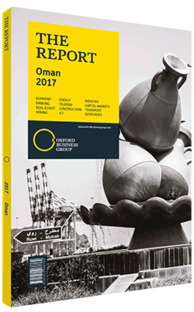Securities & Investment Company Oman bond market analysis
In 2016 Oman joined several other governments and companies in the GCC in tapping the international bond market. The main purpose of the issue was to fund the large budget deficits created as a result of the major decline in oil prices. According to Moody’s, revenues from oil and gas in Oman contributed to around 87% of total government revenues in 2010-15.
The decline in oil prices of about 60% from its peak of $114 in September 2014 to around $50 as of January 2017 has created a significant shortfall between government revenues and expenses. This has led to a budget deficit of OR3.7bn ($9.6bn) in 2015, expected to rise to OR3.8bn ($9.9bn) in 2016, according to the Ministry of Finance. The IMF has forecast a budget deficit of 19.7% of GDP in 2016, an improvement compared to 20.4% in 2015. Oman has the lowest investment-grade rating of “BBB-” from Standard & Poor’s after being downgraded two notches earlier this year.
Return Of Sovereign Debt
The government of Oman tapped the international bond market for the first time after almost two decades in June 2016. The bond sale raised $2.5bn, comprising $1bn of five-year notes at a coupon rate of 3.625%, and $1.5bn of 10-year notes at a coupon rate of 4.75%. Total demand for the bond sale was strong at around $7bn, as a result of which yields on bonds came in lower than initial indications to investors.
The government also issued an international sovereign sukuk (Islamic bond) in June 2016 worth $500m at a coupon rate of 3.5% and a maturity date of July 2022. This was the second sovereign sukuk issued by the government. The first, a OR250m ($649m) sukuk launched in October 2015, was met with an overwhelmingly positive response. The sukuk issue gave Oman’s Islamic banks, insurance firms and funds a much-needed tool to place their funds and improve profitability. Following the successful issues in June 2016, Oman again launched a combined $1.5bn tap of its June 2021 and June 2026 bonds in September 2016. This raised Oman’s total sovereign international bond and sukuk issuances to $4.5bn in 2016.
There have been a number of issues in the local market as well. As far as domestic bond issues are concerned, there were three government development bond issues totalling OR300m ($779m) in 2016.
Issuing Environment
The success of Oman’s international bond issuances can be attributed to Oman’s low debt-to-GDP ratio and a favourable international environment with low interest rates. Interest rate cuts by major central banks over the past few years have driven $12trn worth of global government bonds to trade at negative yields. As a result, money has surged back into emerging markets that are offering higher yields than developed markets, and there has been high demand for GCC sovereign bonds in 2016. Even after issuing $4.5bn in the year, Oman has enough room to borrow further from international markets as debt as a percentage of GDP is very low, at 9.2% as of the end of 2015.
Saudi Arabia’s record debut international bond sale of $17.5bn in October 2016 has major implications for Oman and the rest of the GCC. The success of the bond is likely to open gates for bonds from the GCC over the coming years as more global investors take a closer and longer-term look at the region. Abu Dhabi raised $5bn in April, Qatar raised $9bn in May and Bahrain $2.6bn over 2016.
Room To Grow
Oman’s sovereign bond and sukuk issuances will stimulate its capital market and incentivise the development of new instruments such as a benchmark yield curve. Currently, the debt market is small, with bonds representing 11.8% of Oman’s market at the end of 2015. Government bonds and sukuk account for 73% of bond market, while corporate bonds – including convertible issues – and sukuk make up 27%. The rise in sovereign issuances may prompt the private sector to tap the debt market, and in turn support the market and the wider Omani economy.
You have reached the limit of premium articles you can view for free.
Choose from the options below to purchase print or digital editions of our Reports. You can also purchase a website subscription giving you unlimited access to all of our Reports online for 12 months.
If you have already purchased this Report or have a website subscription, please login to continue.

